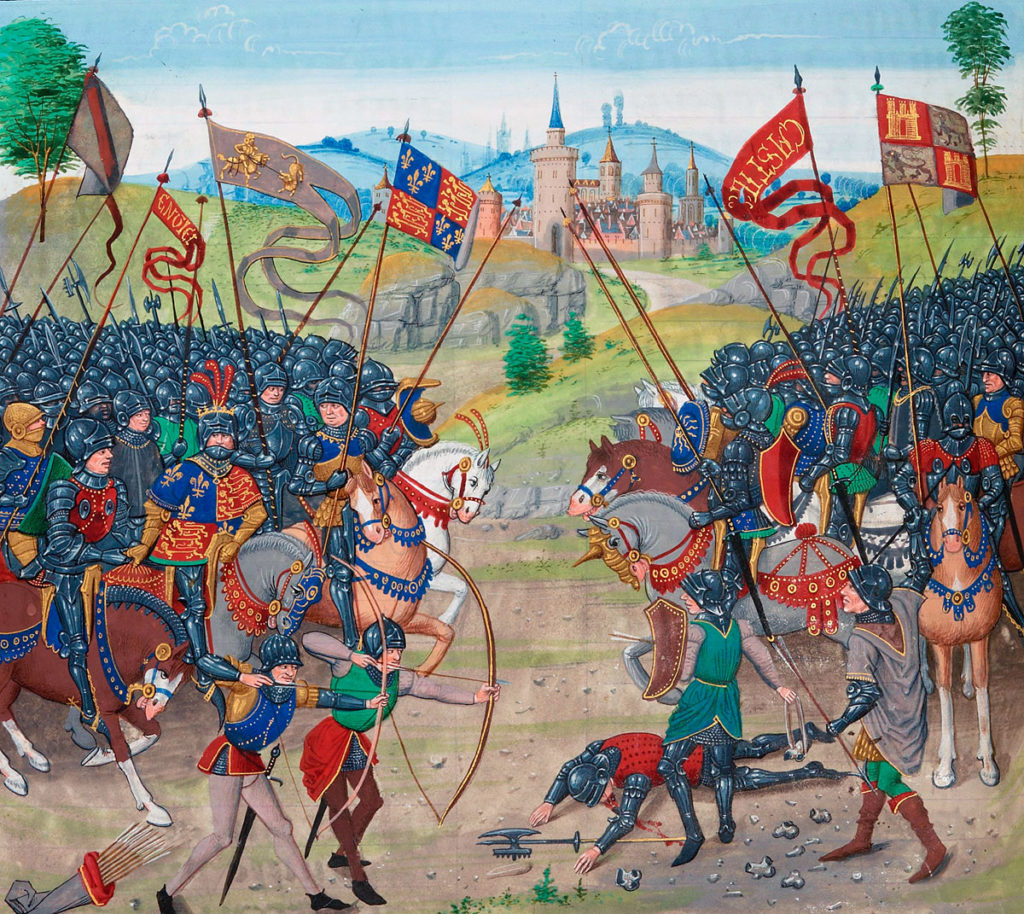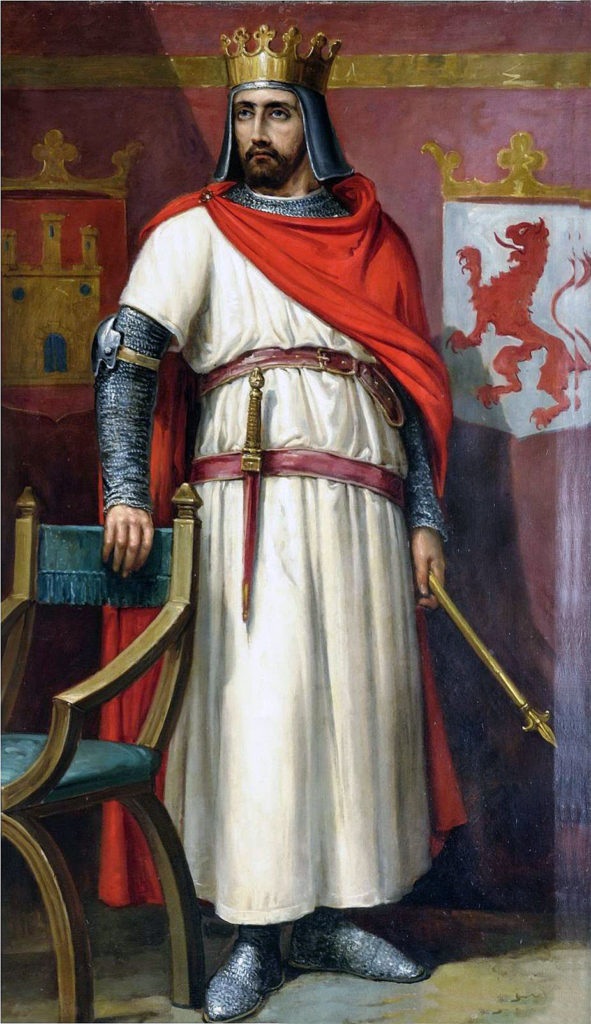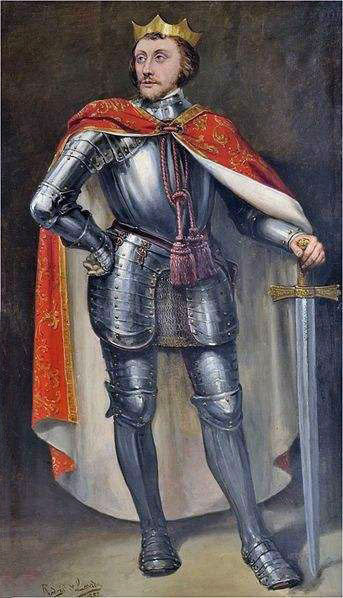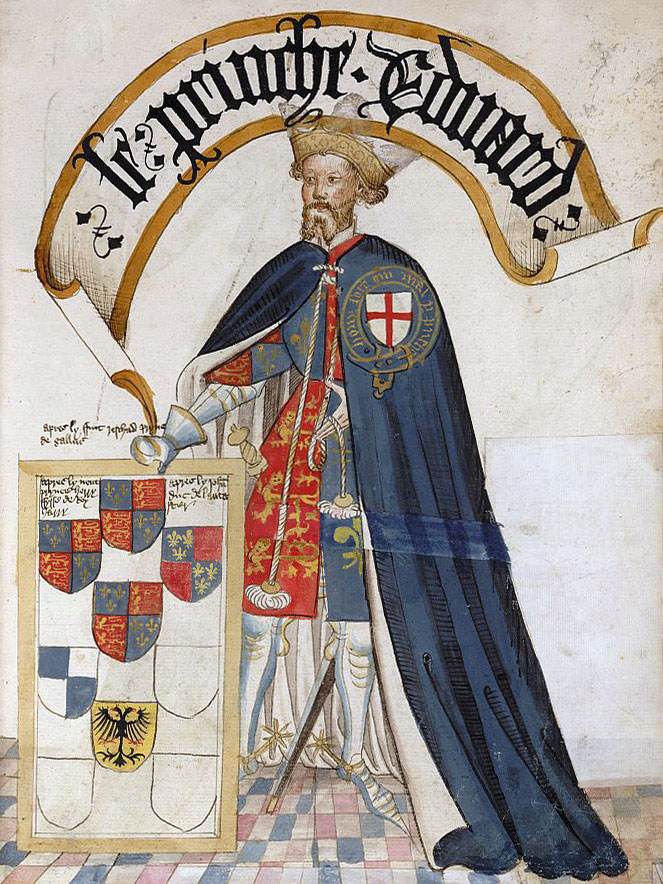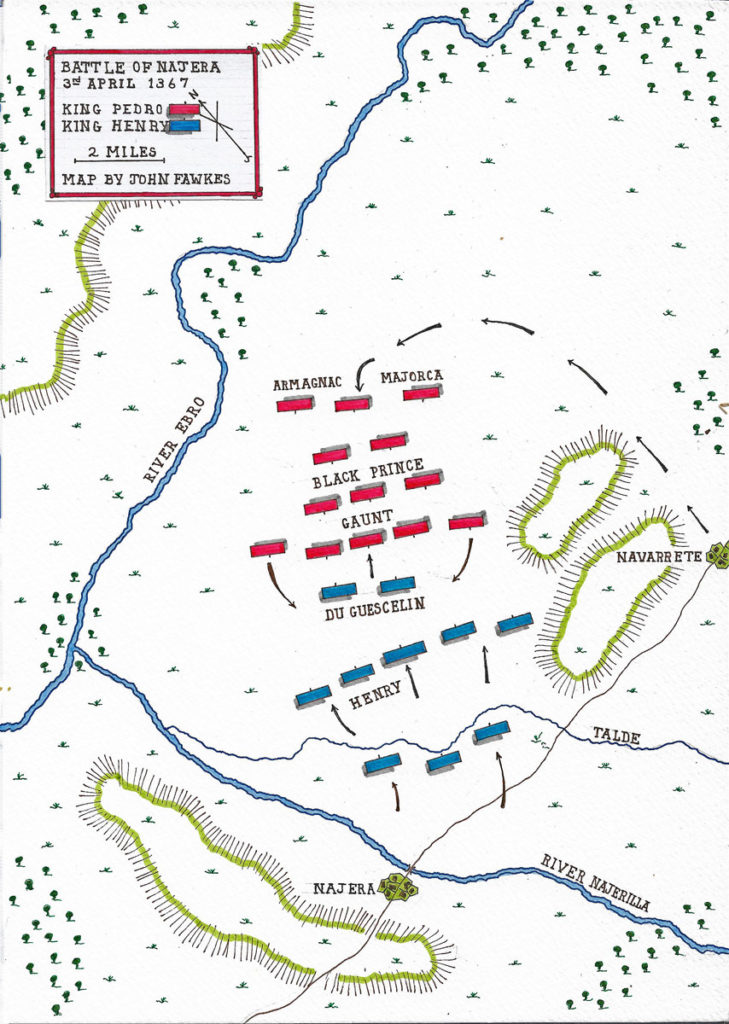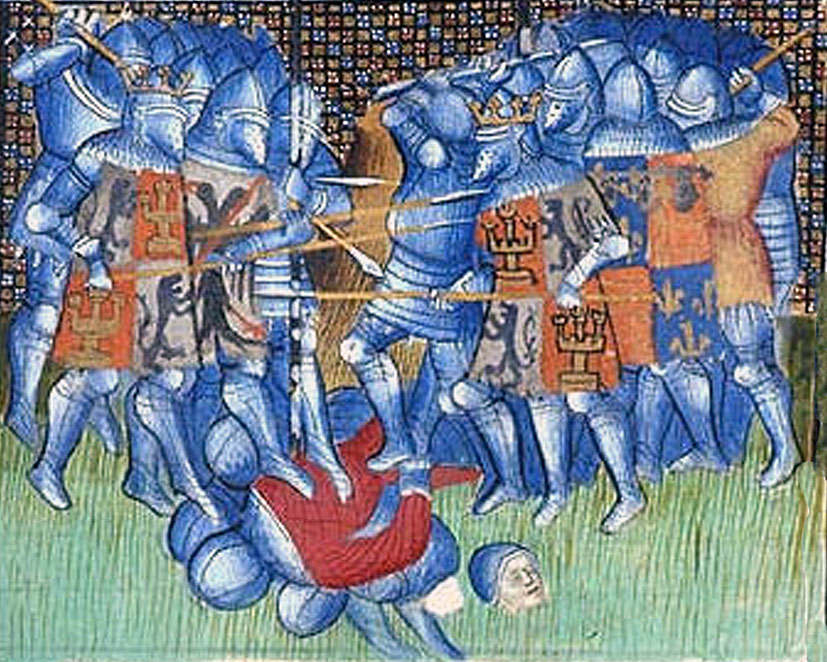The Black Prince’s victory over Henry of Trastamara, King of Castile, on 3rd April 1367, described as his most successful battle militarily and disastrous politically
The previous battle of the Hundred Years War is the Battle of Auray
The next battle of the Hundred Years War is the Battle of La Rochelle
War: Hundred Years War.
Date of the Battle of Najera: 3rd April 1367
Place of the Battle of Najera: at Najera in North East Castile
Combatants at the Battle of Najera: The army of the Black Prince and the displaced King Pedro I of Castile, known as ‘Pedro the Cruel’, against the army of the usurper of the throne of Castile, Henry of Trastamara and his French commander Bertrand du Guescelin, the Constable of France.
Size of the armies at the Battle of Najera: The Black Prince’s army numbered 6,000 to 7,000 men.
Henry of Trastamara’s army comprised around 6,000 men.
Uniforms, arms and equipment at the Battle of Najera: Knights increasingly wore steel plate armour with visored helmets. Their weapons were lance, shield, sword, various forms of mace or club and dagger. Many carried two-handed swords in battle. Each knight wore his coat of arms on his surcoat and shield.
English archers carried a powerful bow from which they could discharge many aimed arrows in a minute.
For hand-to-hand combat archers carried swords, daggers, hatchets and war hammers. They wore jackets and loose hose. Archers’ headgear was a skull cap either of boiled leather or wickerwork ribbed with a steel frame.
Winner of the Battle of Najera: The Black Prince’s army defeated the army of Henry of Trastamara and du Guescelin.
Events leading to the Battle of Najera:
In 1365, Henry of Trastamara, with the support of the French Constable, Bertrand du Guescelin, displaced King Pedro ‘the Cruel’ as king of Castile, the kingdom that covered much of the central area of modern Spain.
Pedro escaped to Bayonne in July 1366, where he met the Black Prince, acting under directions from his father, King Edward III of England, to re-instate Pedro on the throne of Castile by force.
The Black Prince raised a powerful army from his vassals in the Dukedom of Aquitaine, mainly Gascons and from the English and French routier bands that were tyrannising France.
Before the attack on Castile was launched, negotiations took place between councillors acting for King Pedro, the Black Prince and Charles, King of Navarre, through whose mountainous territory in the Pyrenees the Black Prince’s army would have to march to reach Castile, for the recompense to be made by King Pedro to Charles of Navarre and the Black Prince for restoring him to his throne.
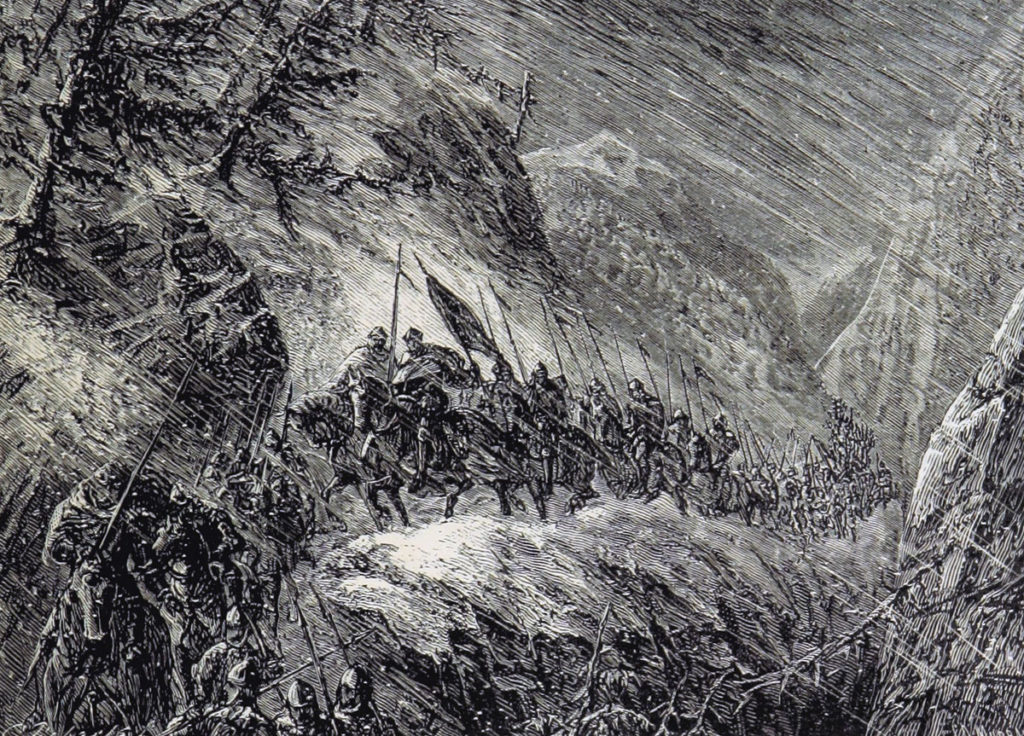
Charles of Navarre would receive the coastal Castilian provinces of Guipuzcoa and Alava, a number of fortresses and a sum of money, for allowing the invading army to cross the Pyrenees through the passes of Navarre.
The Black Prince’s recompense would be the Basque country of Viscaya and the entire cost of recruiting and paying the personnel of his army.
The enterprise of restoring Pedro to the Castilian throne involved the Black Prince in enormous expense as it was his obligation to raise and pay the army and to advance to Pedro the money to be paid to Charles of Navarre, Pedro being without funds following his flight from Castile.
The Black Prince assembled his army for the invasion of Castile in the autumn of 1366. It comprised his own retinue and those of the nobles of Aquitaine with English, Gascon, Breton and other mercenaries from across France and Castile.
Many of the mercenaries joining the Black Prince’s army had fought under du Guescelin in Henry’s revolt against his brother the previous year. They had been well paid for installing Henry on the throne of Castile and were more than happy to be equally well-paid for displacing him.
With the departure of Henry’s mercenary army from Castile, other than du Guescelin’s immediate entourage, Henry was left with few troops to defend his kingdom and the pressure on the Castilians to support him evaporated.
In late December 1366, Henry met with Charles of Navarre. Charles worried that the enterprise to replace Pedro on the throne of Castile might not be realised and he would be left to face the wrath of Henry alone. At the meeting Charles negotiated an agreement with Henry whereby the Navarrese would close the mountain passes to the Black Prince’s army. It was widely believed that Henry had thereby foiled the threat to his throne.
The Black Prince’s response was to send a force to invade Navarre, causing Charles of Navarre hastily to assure him that he fully intended to comply with his obligations in permitting the Black Prince’s army to cross by the Pyrenees passes.
Henry of Trastamara set up his headquarters near Santo Domingo de la Calzada on the west side of the River Oja, where he was joined by du Guescelin and his retinue of routier mercenaries and a small corps of Aragonese nobles, giving Henry a force of some 1,200 men-at-arms.
In February 1367, the Black Prince’s army crossed the Pyrenees by the Pass of Roncevalles and advanced to Vitoria. Henry’s army lay between Vitoria and Miranda compelling the Black Prince to retrace his steps and continue his advance to the west, his target being the Castilian capital of Burgos.
Henry’s army took up a position behind the River Najerilla, by the town of Najera.
At the end of February 1367, Henry of Trastamara received a letter from the King of France. Charles V reminded Henry of the advice of his father to avoid giving open battle to an English army unless it was unavoidable or the circumstances were overwhelmingly favourable.
Henry was increasingly unable to avoid open battle without his cause collapsing around him. While his military officers advised him to avoid battle his courtiers urged him that his residual support in Castile would vanish unless he fought the invader.
The Black Prince wrote a letter to Henry couched in condescending terms, designed to provoke him into giving battle. The contents of the letter were made public.
Henry replied in similar terms and brought his army across the bridge to the east bank of the River Najerilla to confront the Black Prince, taking up a position on a low rise behind the Yalde Stream.
Account of the Battle of Najera:
The Black Prince’s army crossed the great Roman stone bridge over the River Ebro at Logroño and advanced down the road to the village of Navarrete, some ten miles short of the Castilian position.
At Navarette, the Black Prince formed his army for battle: English and Breton men-at-arms in the front rank, flanked by contingents of archers, all commanded by John of Gaunt, Sir John Chandos and the two marshals of the army, Steven Cusington and Guichard d’Angle: in the second line, the Black Prince led the main body, with the Gascons, under the Lord of Albret and the Count of Armagnac on the right and the Captal de Buch on the left.
In the centre of the second line, the Black Prince commanded the routiers of the Great Company and the exiled Castilians and Aragonese.
Instead of advancing straight down the main road towards the Castilian position, the Black Prince took his army to the right, leaving well before dawn on 3rd April 1467 and marched around the area of high ground that lay to the north of the road, emerging on Henry of Trastamara’s left and taking him by surprise.
The Black Prince’s army halted and dismounted in preparation for battle.
Seeing the Black Prince’s army for the first time on their flank, Henry and du Guescelin were compelled to wheel the Castilian army to face the impending attack.
Du Guescelin’s division executed this turn with speed and precision.
The second division was not so fortunate, dissolving in confusion, with many of the Castilian light horse deserting to King Pedro, followed by a heamhorrage of infantry changing sides.
Seeing the desertions du Guescelin decided to attack without further delay.
Du Guescelin ordered his first line of French and Castilian mounted men-at-arms to charge.
The charge struck the dismounted men commanded by John of Gaunt and Sir John Chandos, pushing them back before they rallied and held du Guescelin’s attack.
The wings of the Black Prince’s first line closed around du Guescelin’s division.
Don Tello, brother of Henry of Trastamara, attacked with the Castilian light cavalry on the left wing, but his men were dispersed by the fire of the English archers.
The Castilian light cavalry wore little armour and suffered heavy casualties before fleeing the battlefield.
Henry of Trastamara led the Castilian heavy cavalry around the right flank to attack the Black Prince’s division in King Pedro’s second line.
They were met with an arrow storm from the Black Prince’s archers. Notoriously it was the horses that were particularly vulnerable to arrow-fire.
The Castilian men-at-arms refused to demean themselves by fighting on foot and had no experience of fighting against English archers.
The Castillians lost large numbers of horses before turning and leaving the battlefield, without pressing home their attack.
Abandonned by their comrades, the French men-at-arms in the centre of the front line were outflanked and surrounded, before being overwhelmed.
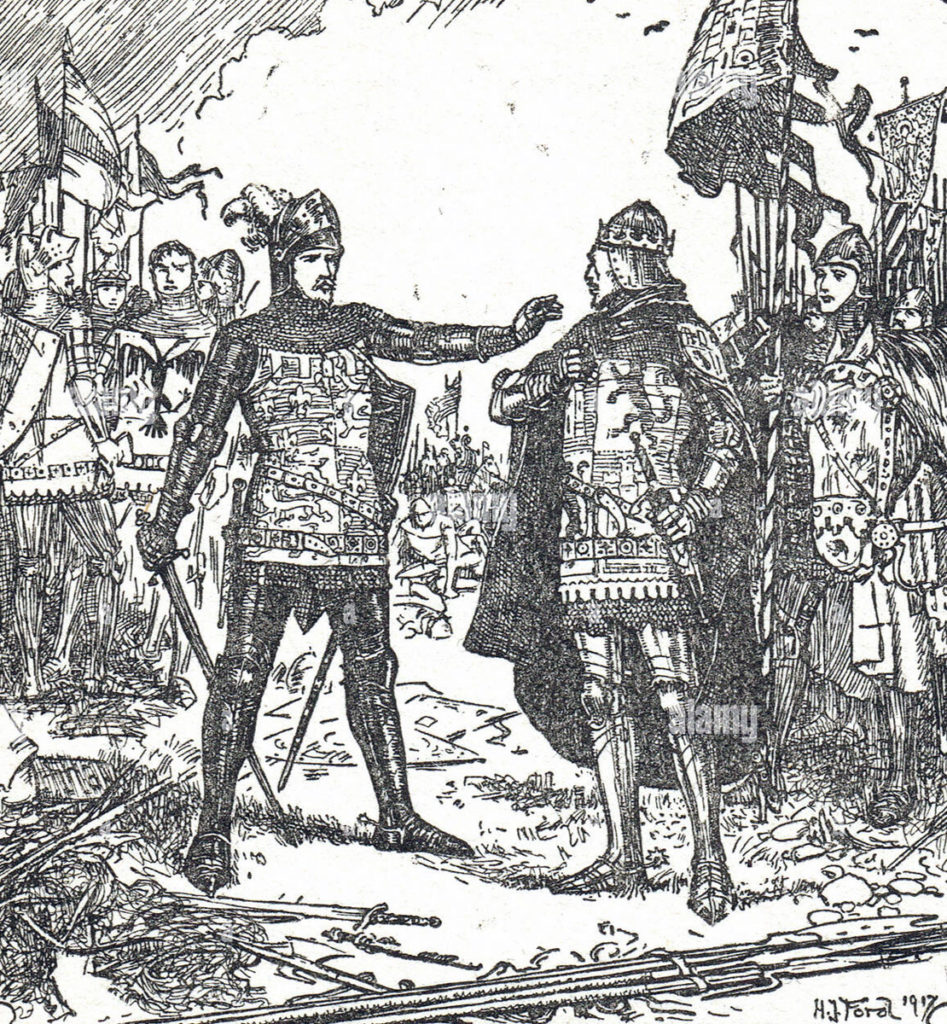
The remaining Castilian troops that had taken no part in the assault were then attacked in the front by the Black Prince’s men and in the flanks by the troops of John of Gaunt and Sir John Chandos, before breaking ranks and fleeing to the river.
The Black Prince ordered his reserve of Aragonese cavalry commanded by James of Majorca to pursue the fleeing Castilians, who were cut down trying to cross the narrow bridge or hunted in the neighbouring town.
Henry of Trastamara’s army had ceased to exist.
The Black Prince spent the night on the battlefield in accordance with tradition, which required the victor to occupy the ground won in battle to demonstrate his victory.
Casualties at the Battle of Najera:
On the day after the battle the Black Prince’s heralds toured the field counting the corpses. There were 5,000, almost all from the Castilian army.
Around half of Henry of Trastamara’s army perished.
The Black Prince’s losses were negligible.
As so often was the case in medieval battles, the majority of the losses were inflicted on the defeated army during the pursuit.
All Henry’s principal captains were captured and held for ransome, including Bertrand du Guescelin.
The one important figure to escape was Henry of Trastamara himself, who took the horse of one of his squires and left the battlefield, making his way to France.
Following the battle, Pedro attempted to execute the Castilian nobles who had rebelled against him, but was prevented by the Black Prince, other than in a few instances. In the case of one man, Pedro killed him himself. Henry of Trastamara’s chamberlain was formally executed.
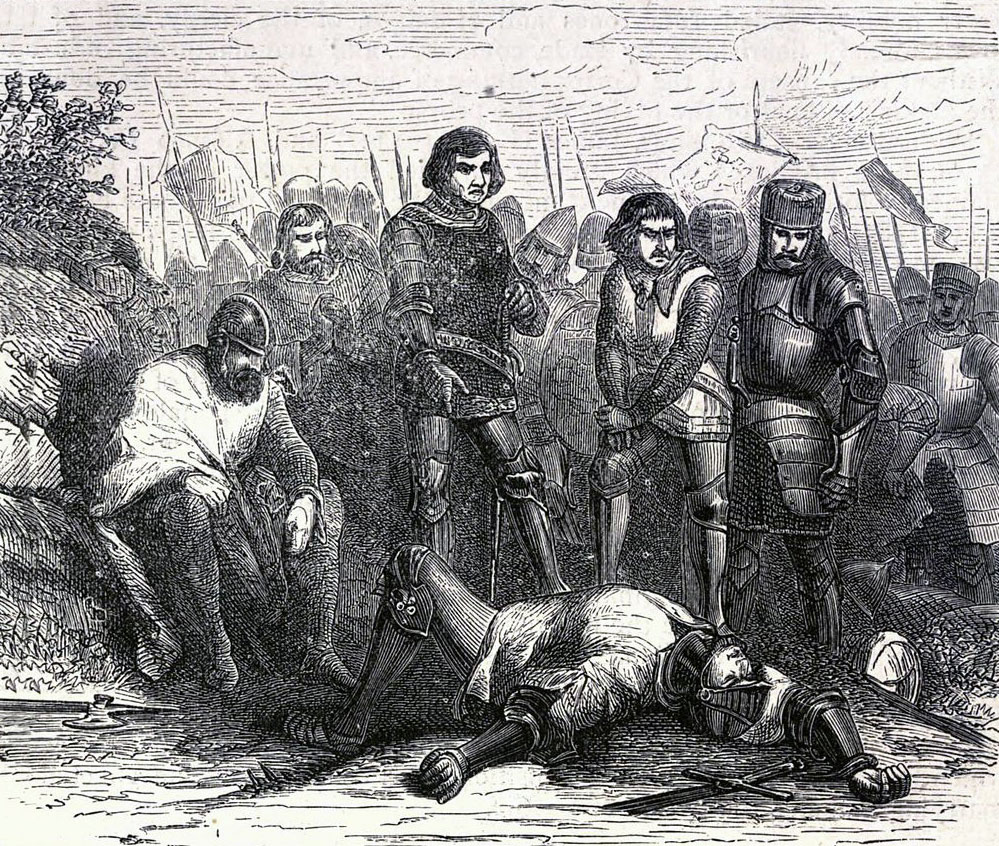
Follow-up to the Battle of Najera:
Victory in the Battle of Najera did not lead to the consequences expected by the Black Prince. Pedro the Cruel on taking the throne of Castile, following the battle, refused to discharge his obligations to the Black Prince, leaving the Prince with a financial burden that dogged him and the English Dukedom of Aquitaine for many years. In addition, the Black Prince was infected with disease, possibly dysentery, during the campaign leading to his declining health and eventual death in 1376.
After the restoration of King Pedro to his throne, the Black Prince remained in Castile with his army in an attempt to compel Pedro to make the payments he had agreed to. The Black Prince was finally compelled to dismiss his troops as he could no longer afford to pay them.
Pedro, in spite of undertakings to do so never did make any payments, leaving the Black Prince bankrupt and without the resources needed to meet the renewed French assault on the English Duchy of Aquitaine.
King Charles V of France made it his business to ensure the restoration of Henry of Trastamara to the throne of Castile.
This was achieved at the Battle of Montiel on 4th March 1369, following which Henry of Trastamara killed his brother, King Pedro before resuming his position.
Anecdotes and traditions from the Battle of Najera:
- Following the Battle of Najera, King Pedro attempted to inflict retribution on the captured senior captains of the losing side, even the eminent Constable of France, Bertrand du Guescelin, but was restrained by the Black Prince.
References for the Battle of Najera:
Cursed Kings, Volume IV of the four-volume record of the Hundred Years War by Jonathan Sumption.
The Art of War in the Middle Ages Volume Two by Sir Charles Oman.
British Battles by Grant.
The previous battle of the Hundred Years War is the Battle of Auray
The next battle of the Hundred Years War is the Battle of La Rochelle
